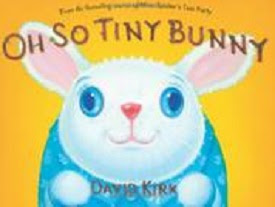
Chapter 3: A Princess Ought To Be Fearless
(That's just crazy: the only people who are fearless are people who have no imagination.)
Princess Imogene Eustacia Wellington is in an un-princessly snit.
Her parents have invited that pesky Prince Malcolm from the kingdom next door to her thirteenth birthday party. She didn't like him when he was eleven, and he's only going to be just as annoying this time, only
bigger!
And the Queen Mother has assigned her to read a boring book,
The Art of Being a Princess, fourteen chapters, one smarmy chapter a day, before her birthday, beginning with The Foreword.
(Are you kidding? Nobody reads the foreword.)
Princess Imogene has some fun writing snarky comments after each chapter heading, but as for actually reading, she makes it only as far as the opening sentence--
One should always strive to be the sort of princess about whom it is said, "She was as good as she was beautiful,"--before ditching the book. She's not feeling particularly beautiful (her hair is
impossible), and she's not in the mood to be good, either, as she sneaks out of the castle and goes for a walk. Suddenly, she hears a little voice from somewhere.
"Hey, Princess!"
Princess Imogene realizes that there's a frog on a stereotypical lily pad talking to her. And that frog has a very strange story--and a vaguely familiar request:
"A witch puts a spell on a prince, turns the prince into a frog. The only way to break the spell is if a princess comes along and...you know...
Don't worry, Princess. I got my clothes on. They changed right long with me!"
"A Princess Is Always Kind and Helpful--and Fearless," the book had said, so Imogene puckers up and the frog puckers up, insofar as a frog can, and the princess kisses the frog.
The frog turns into a boy--a boy who is NOT and has never
been a prince, and that's not the worst of it. It seems the frog omitted one important point in his request: when he turns back into a boy,
Imogene becomes a frog in his stead.
And so begins the most interesting fourteen days in Frog Princess Imogene's young life, as she joins the love-snockered farmer's daughter, Luella, hoping to talk her into taking her back to the castle so her parents can deal with the frog problem. But Luella, although kind, has other interests, namely following the "cute" Bertie off with a troupe of actors who promise her a starring role. But Luella soon learns that boys lie and will say anything to get a free washerwoman and cook, and poor Imogene finds herself part of a comedy act--A Boy and His Talking Frog--as they tour from village to village. Being a princess is beginning to look like a better deal all along to the
frogged Imogene and it looks like the ditsy and romantically besotted Luella is her only hope to make it back to the castle.
Perhaps the author inherited her comedic writing skills from her mother, who provided her with the perfectly alliterated name, but however she came into them, Vivian Vande Velde is one of the foremost purveyors of the funny and fanciful fractured fairy tale, and her latest does not disappoint. Our grumpy 'tweener princess Imogene learns a lot about the ways of the medieval world during her coming-of-age days as a captive frog, a time in which she comes to appreciate some of those virtues she formerly spurned. Even the clueless Luella comes through in the end, returning her to her kingdom and, with a little bit of intellectual assistance from the Queen, comes up with the key to solving her dilemma of how to become her princessly self without turning another person into a frog in the bargain.
Vande Velde's tongue-in-cheek storytelling, with each chapter an ironic exposition of the chapter headings of
The Art of Being A Princess, develops believably within its fairy tale premise, each character fittingly drawn, with the sparklingly humorous dialogue for which the author is well known. Her latest,
Frogged
(Houghton Mifflin Harcourt, 2013), forthcoming April 2, shows Vande Velde at the top of her craft in a funny, freewheeling, fractured fairy tale whose happily-ever-after ending can't help but delight middle readers.
Some of Vivian Vande Velde's other comic walks on the fantastical side include her stuck-inside-the-video game spoofs,
User Unfriendly, Deadly Pink,
Deadly Pink,
and
Heir Apparent,
and her body-switching, talking pooch tale,
Smart Dog.
Labels: Fractured Fairy Tales (Grades-4-8), Frog Stories, Magic Stories, Princess Stories
 Baby Porcupine needs a name. But Mr. and Mrs. Porcupine are stumped.
Baby Porcupine needs a name. But Mr. and Mrs. Porcupine are stumped.


















